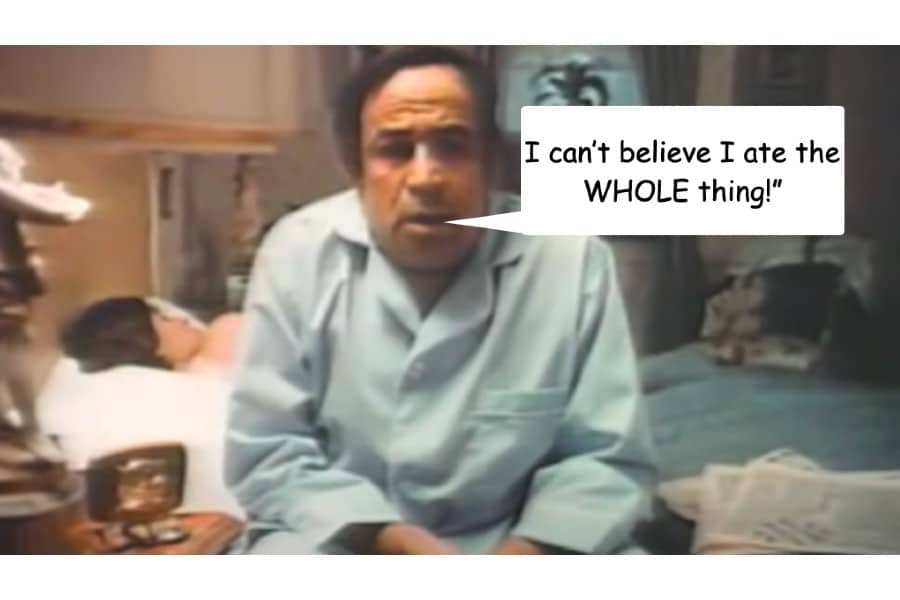“Hybrid Persuasive Power”?
Yup.
Hybrid of what?
Hybrid of demonstration and testimonial, with a healthy helping of drama.
Because that’s what effective slice of life commercials are — they’re mini-dramas in which the efficacy of the product is semi-demonstrated, as testified by the main character.
Semi-demonstrated?
Yeah. Because you can’t view and verify the actual performance. If you could, it would be an actual demo ad.
For example, my original post on the power of demo ads began with my involuntary recall of Dawn’s demo ads of the 80s, along with their tagline “Dawn gets grease out of your way.”
Many of those ads were “slice of life” ads, with their own story arcs. Except the viewer could watch as Dawn visibly dispersed grease, thereby making the commercials proper demo ads.
But what if you couldn’t SEE a product working, just due to the nature of the product or service?
That’s where you enter into the real of the pseudo or semi demo ad, where the slice of life format reigns supreme.
Take these classic ads for Alka-Seltzer.
You can’t SEE Alka-Seltzer eliminating a person’s indigestion.
But you can see the before-and-after effects of Alka-Seltzer, as dramatized by — and testified to — by the actors, just like in these ads:
Why “Pseudo-Demonstrations” Work
Why would a fake demonstration persuade anybody? They’re just actors in a commercial and everybody watching knows that!
Slice of life pseudo demonstrations can work, and work brilliantly.
And they can fail spectacularly, too.
It all depends on the quality of the storytelling and acting.
How true-to-life is your dramatized slice of life?
If it feels true-to-life and your ad pulls the audience into the story, then the fact that the demonstration and testimonials are only play-acted doesn’t matter.
Neuroscientists that study persuasive storytelling call this phenomenon “narrative transportation.”
Once an audience is transported INTO the story world, information from outside the story world — what’s called para-textual information — no longer matters to the persuasive power of the story.
So the fact that people are watching an advertisement no longer matters.
The fact that audiences know they’re watching actors performing in a paid role no longer matters.
See why storytelling is a persuasive super-power for advertisers?
But there is a catch.
You have to transport the audience INTO the story world.
You have to use slices of life that feel true to life.
And you’ve gotta nail the acting.
In the case of the “Try it, you’ll like it” and “I can’t believe I ate the whole thing,” the creative team readily admits that they “stole” those lines from real life.
Those lines are things they heard people say growing up, or things they said themselves.
So they were slices of real-life guaranteed to draw people in.
And from there, the brilliant acting does the rest.
Do Your Ads Feel True to Life? Are you telling stories that suck people in?
The purpose of this post isn’t to convince you to run slice of life ads.
The purpose of this post is to key you into the power of storytelling, while alerting you to the must-haves to put that power work for you.
Are your ads transporting people into a story world?
And if they are, is the story then persuading the audience of anything worthwhile? Is there a dramatized demonstration of effectiveness buried in that story?
If not, you should seriously re-think your advertising, regardless of whether the slice of life format is a good fit for your brand.
- Are You Paying for Too Much for the Wrong Keywords? - July 15, 2024
- Dominate Your Market Like Rolex — 4 Powerful Branding Lessons - July 3, 2024
- Military-Grade Persuasion for Your Branding - June 25, 2024

